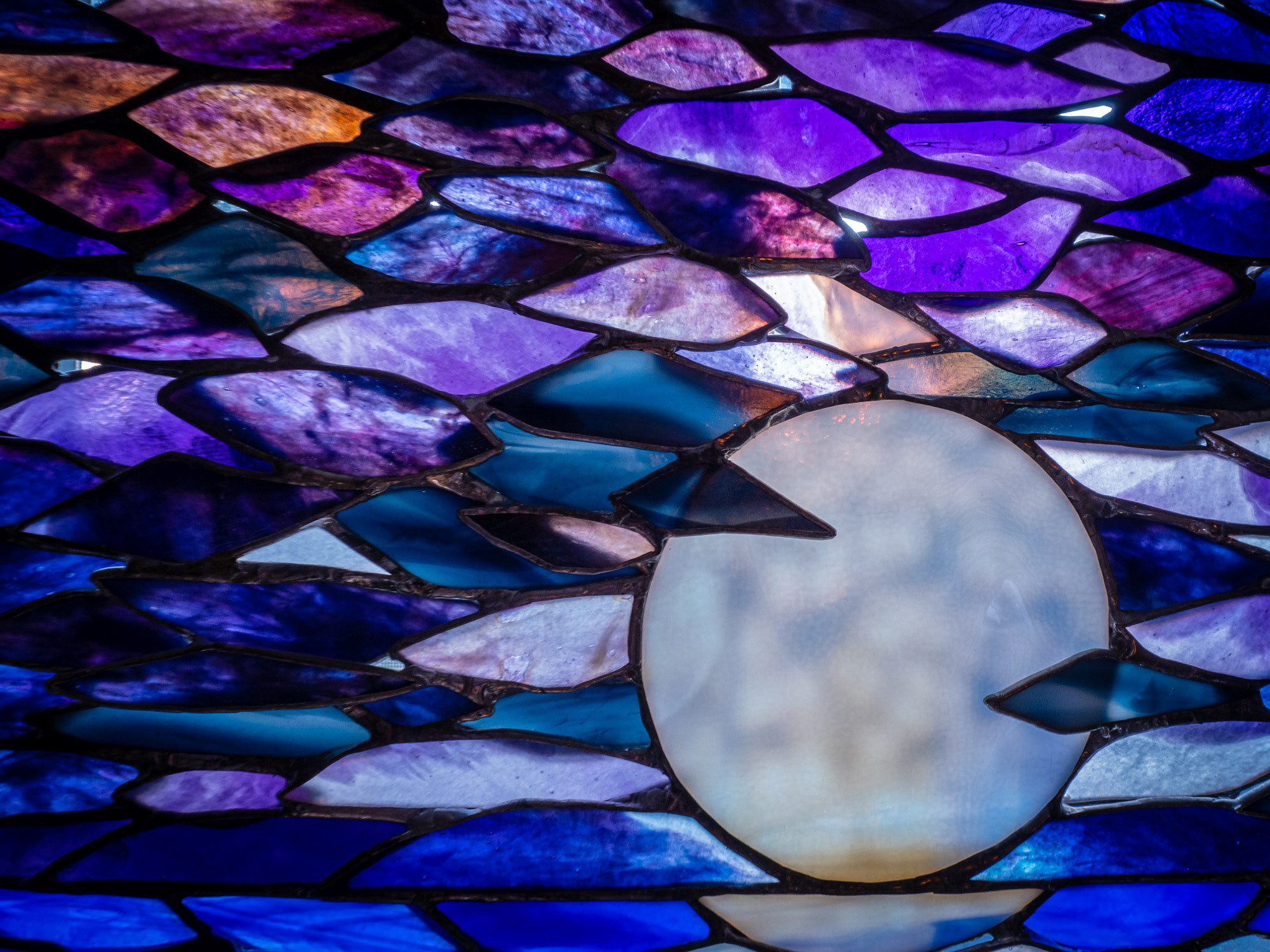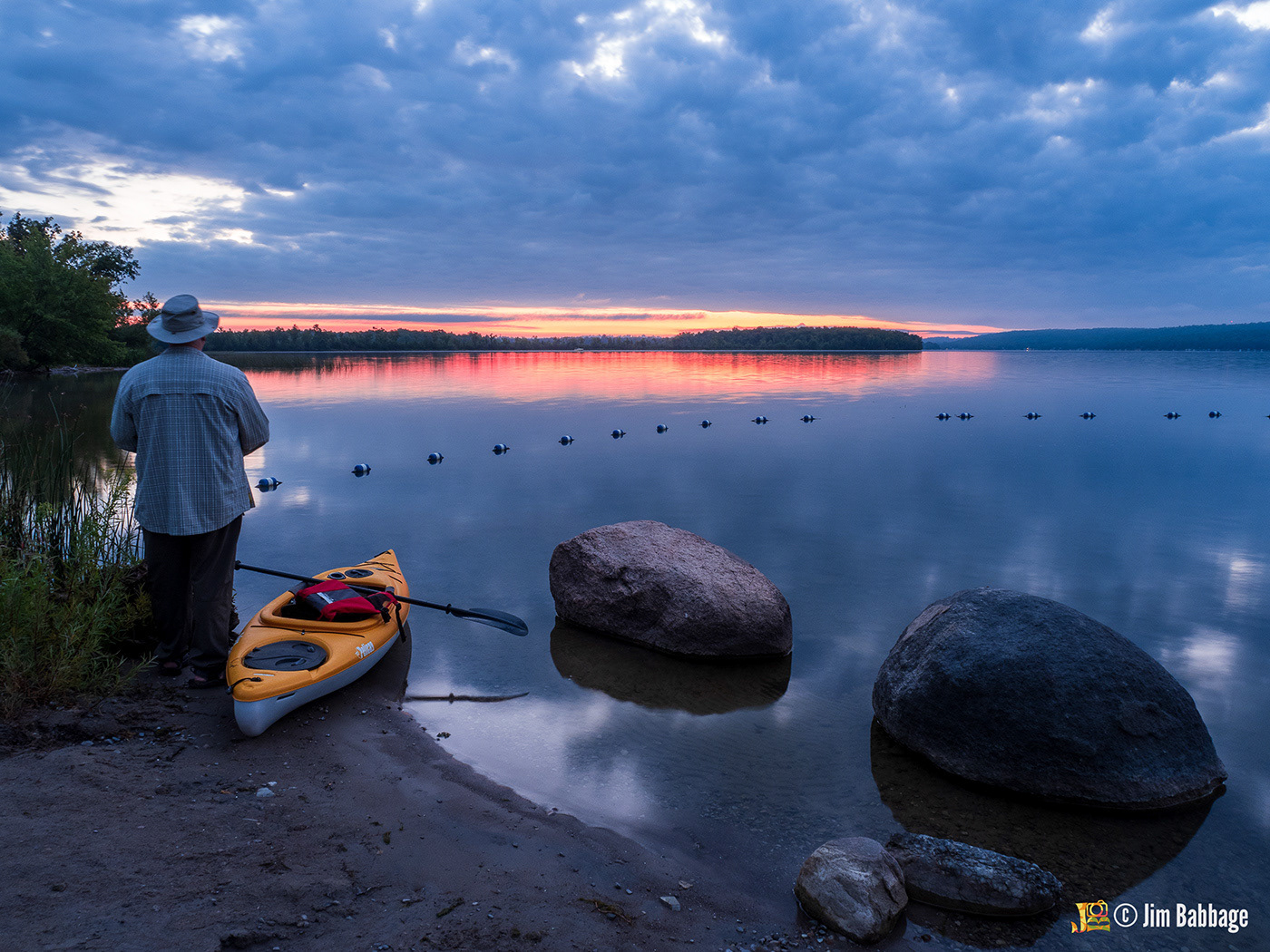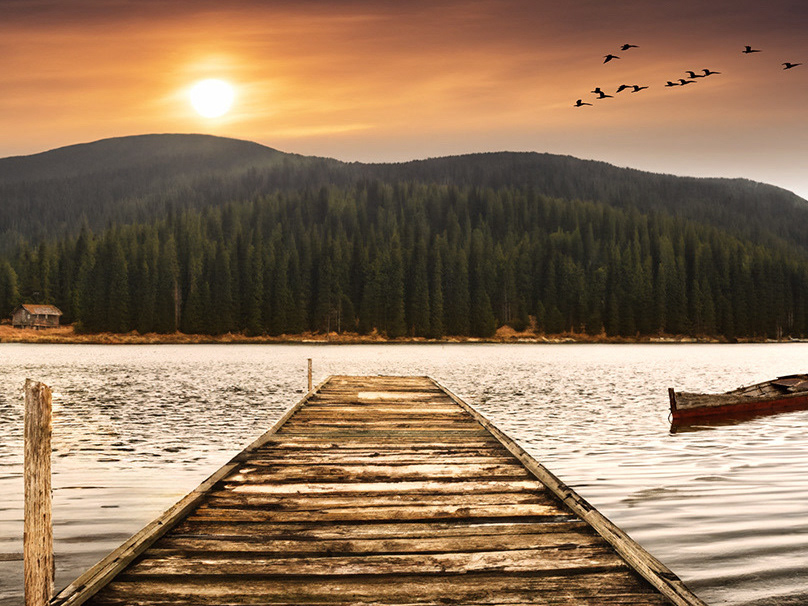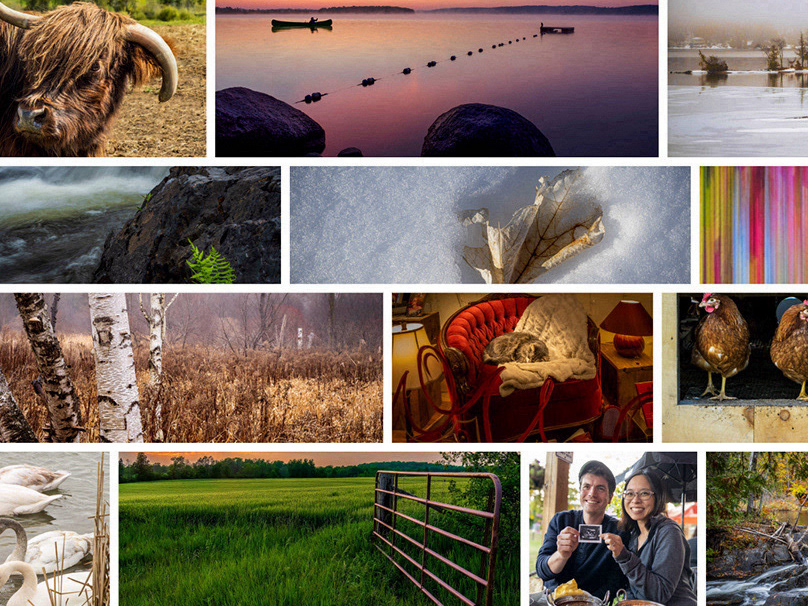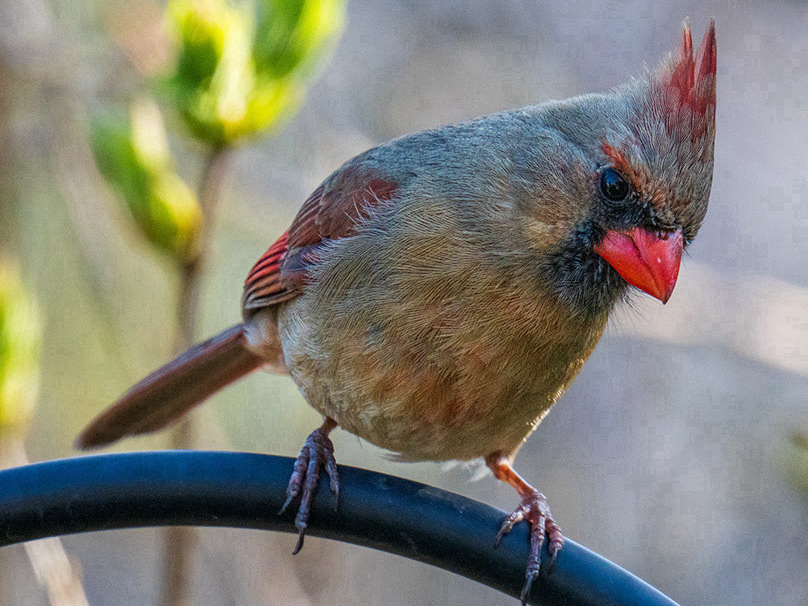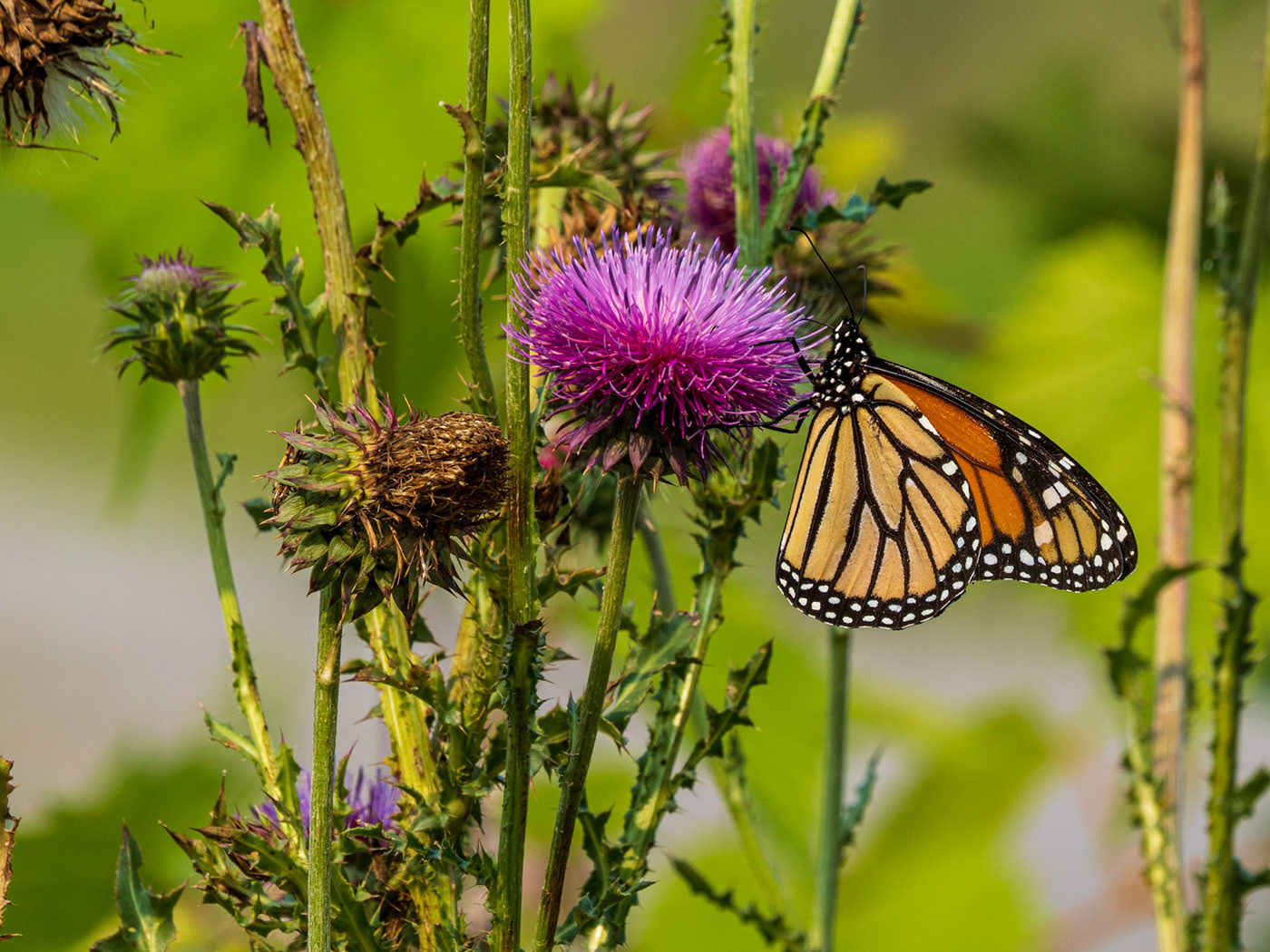Magical Misty Morning
Lately, we've been having large shifts in temperature between day and night, often more than 10 degrees Celsius, which can make for some stunning scenes in the early morning. It's one of the things I love about this time of year; that temperature differential creates ground mist and the even more dramatic, low-lying fog.
While great for photography, it can be treacherous when driving country roads, as you can suddenly end up in near zero visibility situations.
Fortunately for me, I never lost sight of the road ahead, and in the span of just over an hour, I was given many opportunities for beautiful captures.
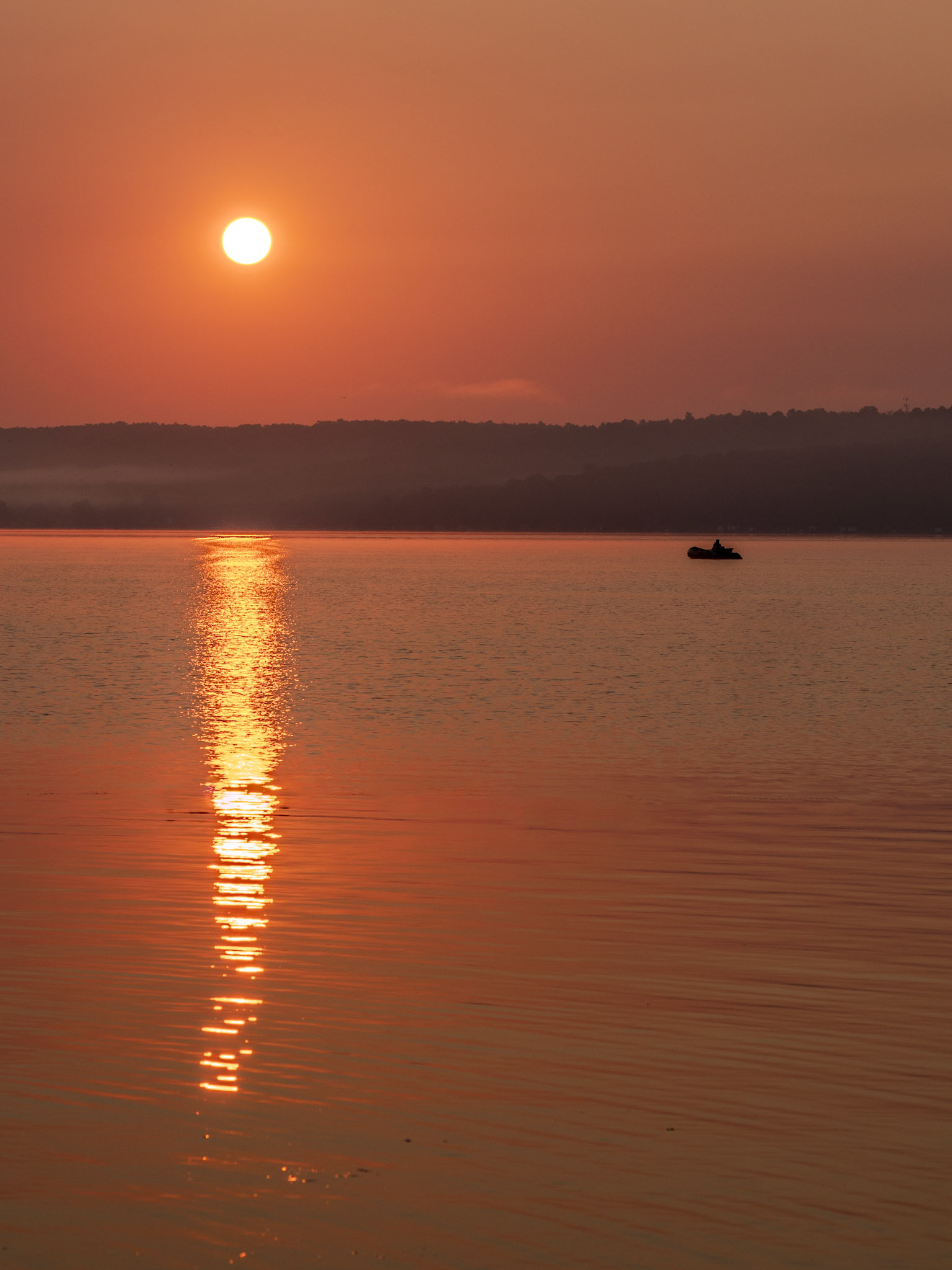
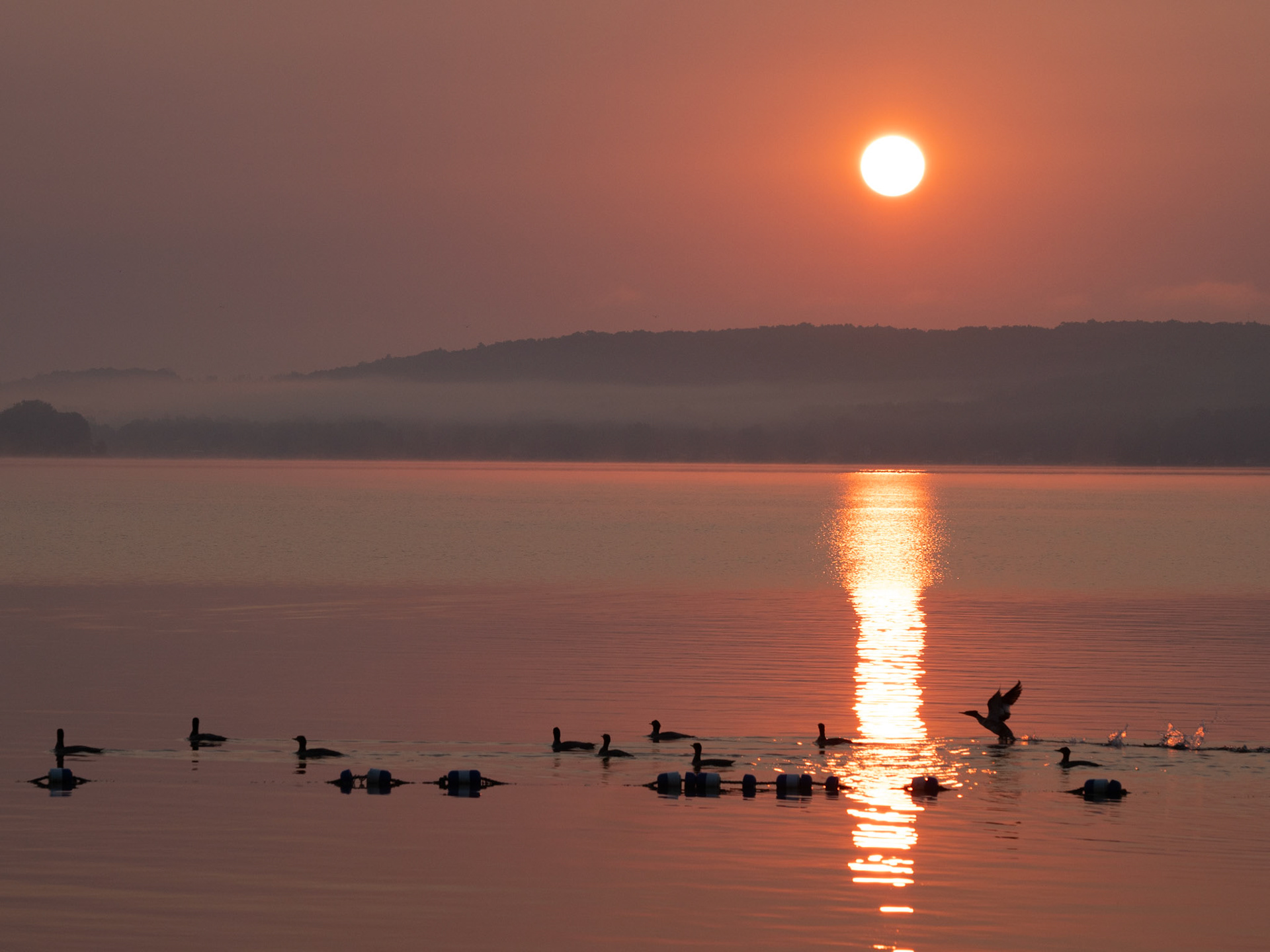

The sunrise was stunning, the way that orange ball of fire reflected on the water! The first image with the lone fisherman utilized Lightroom's new Generative Remove to eliminate the buoy floats from the foreground.
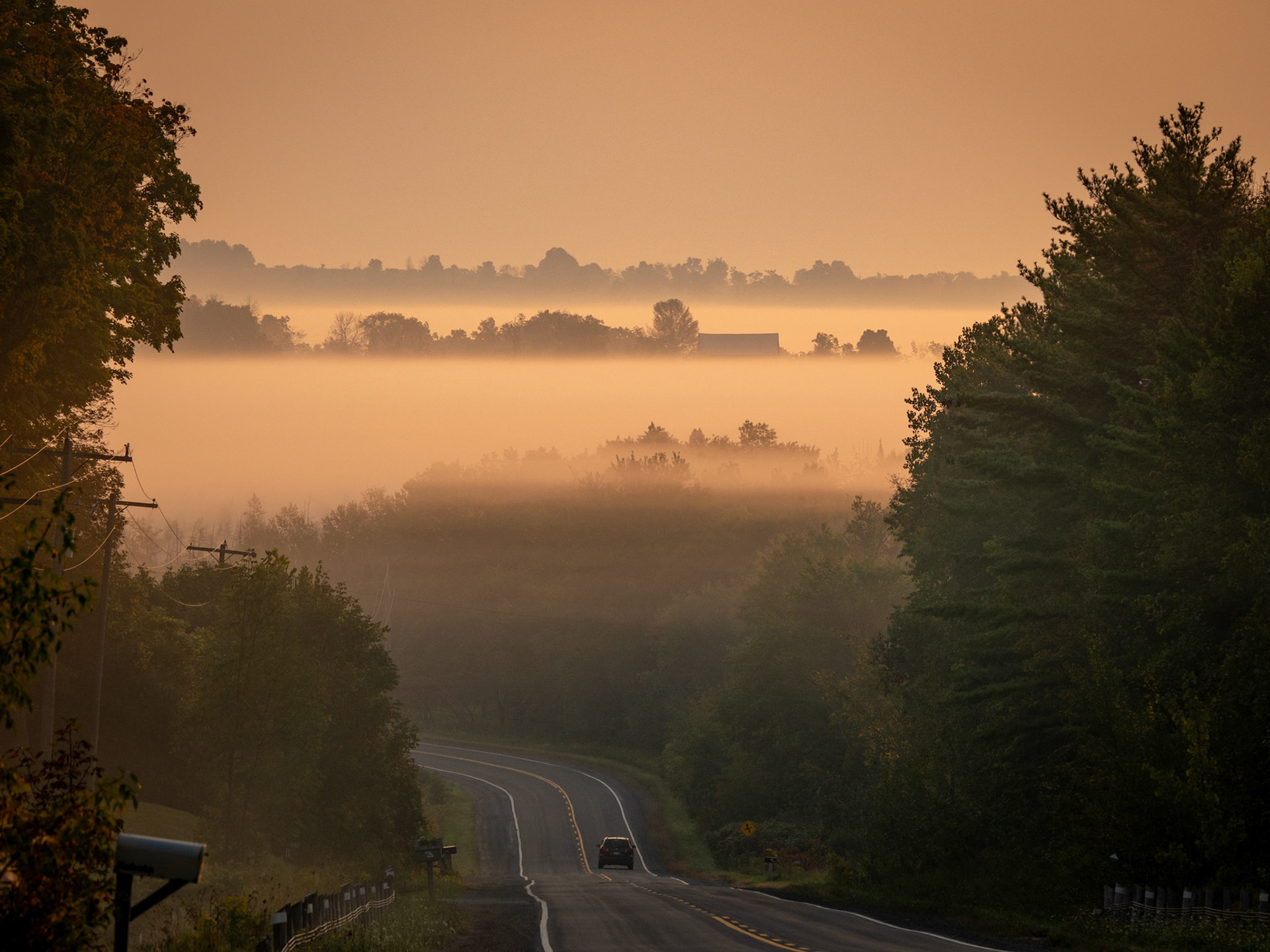
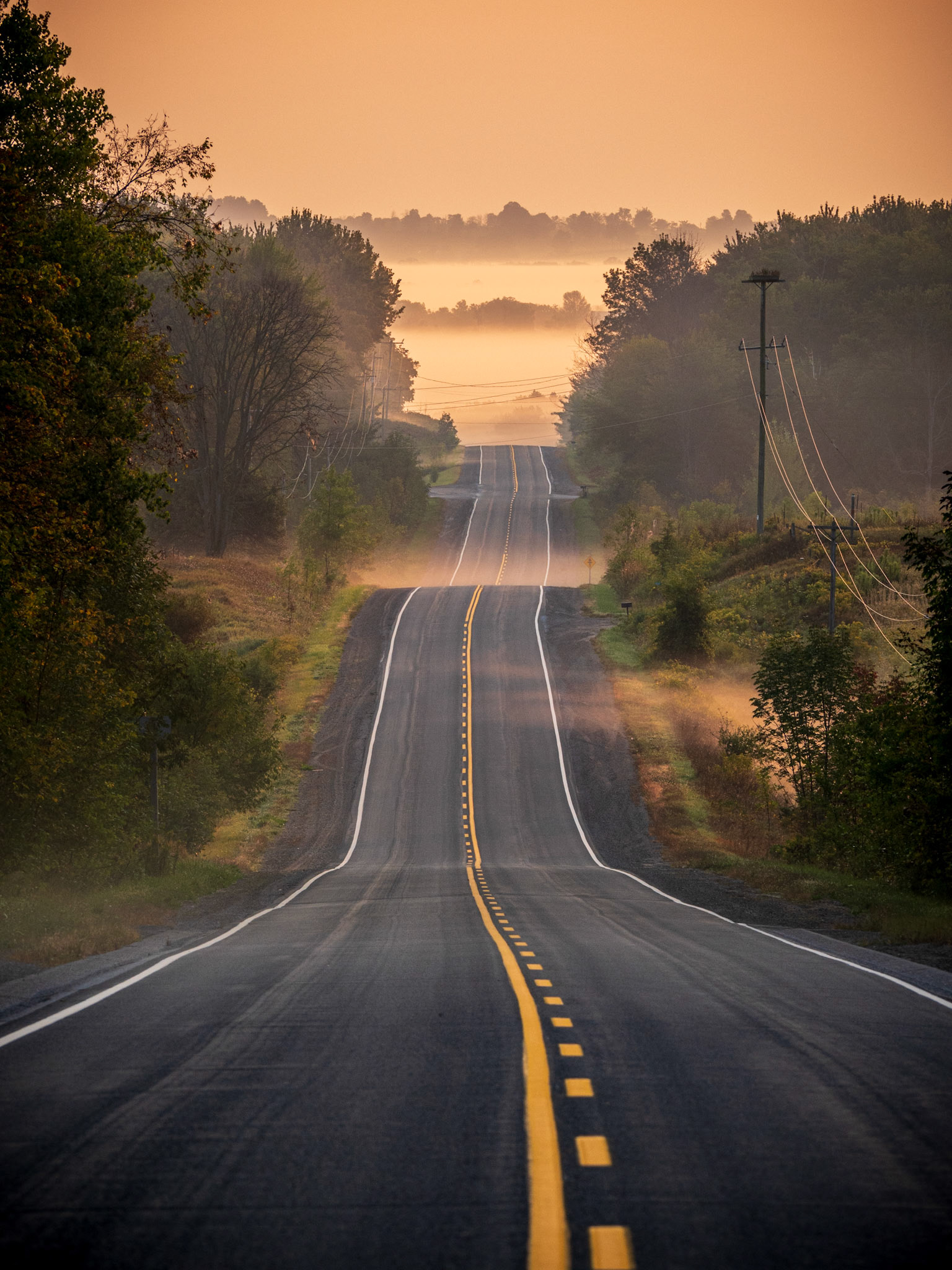
I love the perspective of a hilly or curving road in the country, made even more impactful with early morning fog, and while I almost never do this, I ventured out to the centre line for this image on the right (above, right) . The symmetry created by being in the middle of the road, and the psychological impact for the viewer KNOWING I was on the road, make for - in my opinion - a very powerful composition. This is not a decision to be taken lightly, however; ideally, have a partner who can watch/listen for traffic, or have a good view of the road behind you before you step out.
I'm so pleased with how the final road image turned out. To realize my vision, composition is critical, but so is post-processing, as can be seen in the edit replay, above.
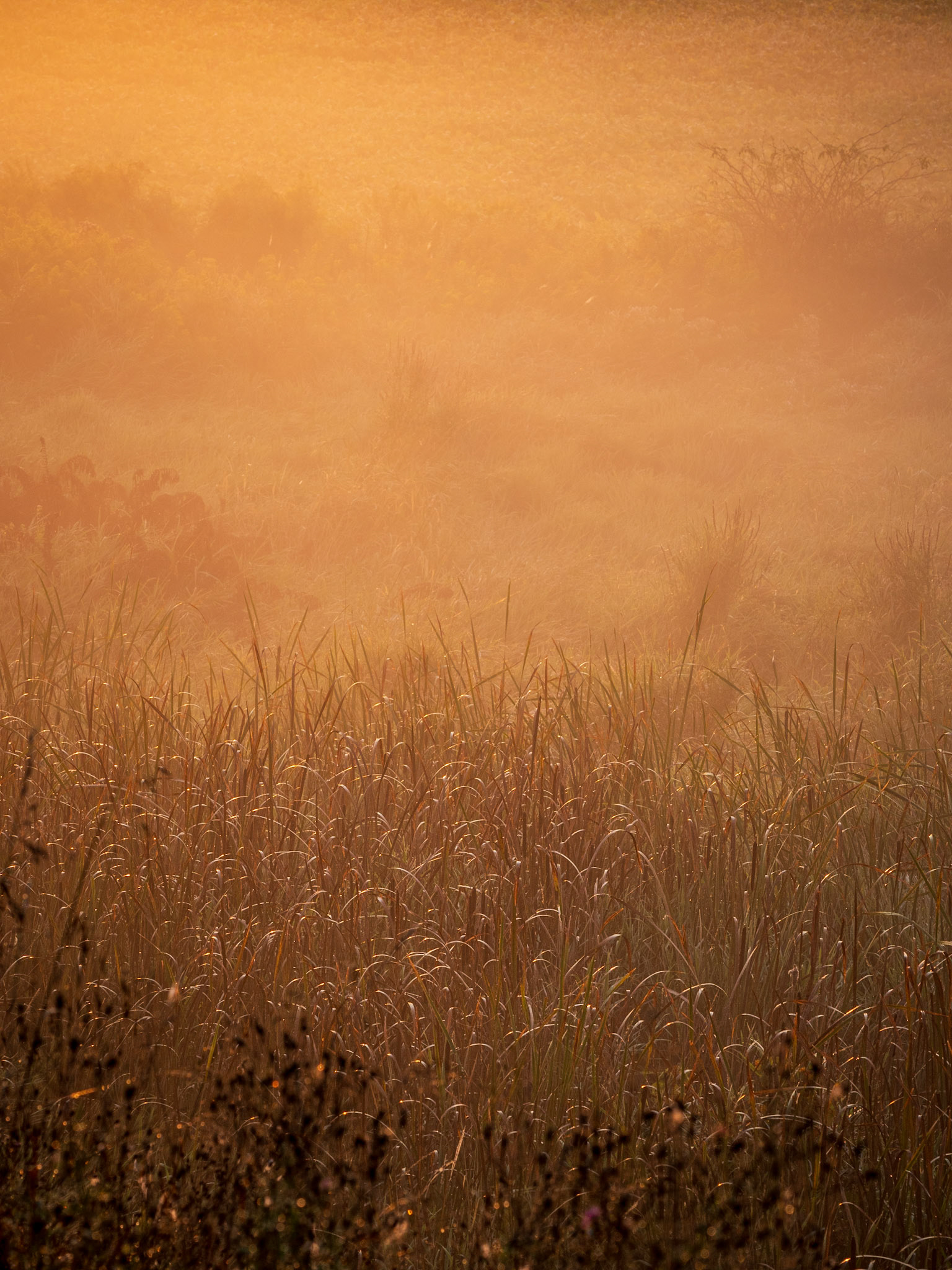
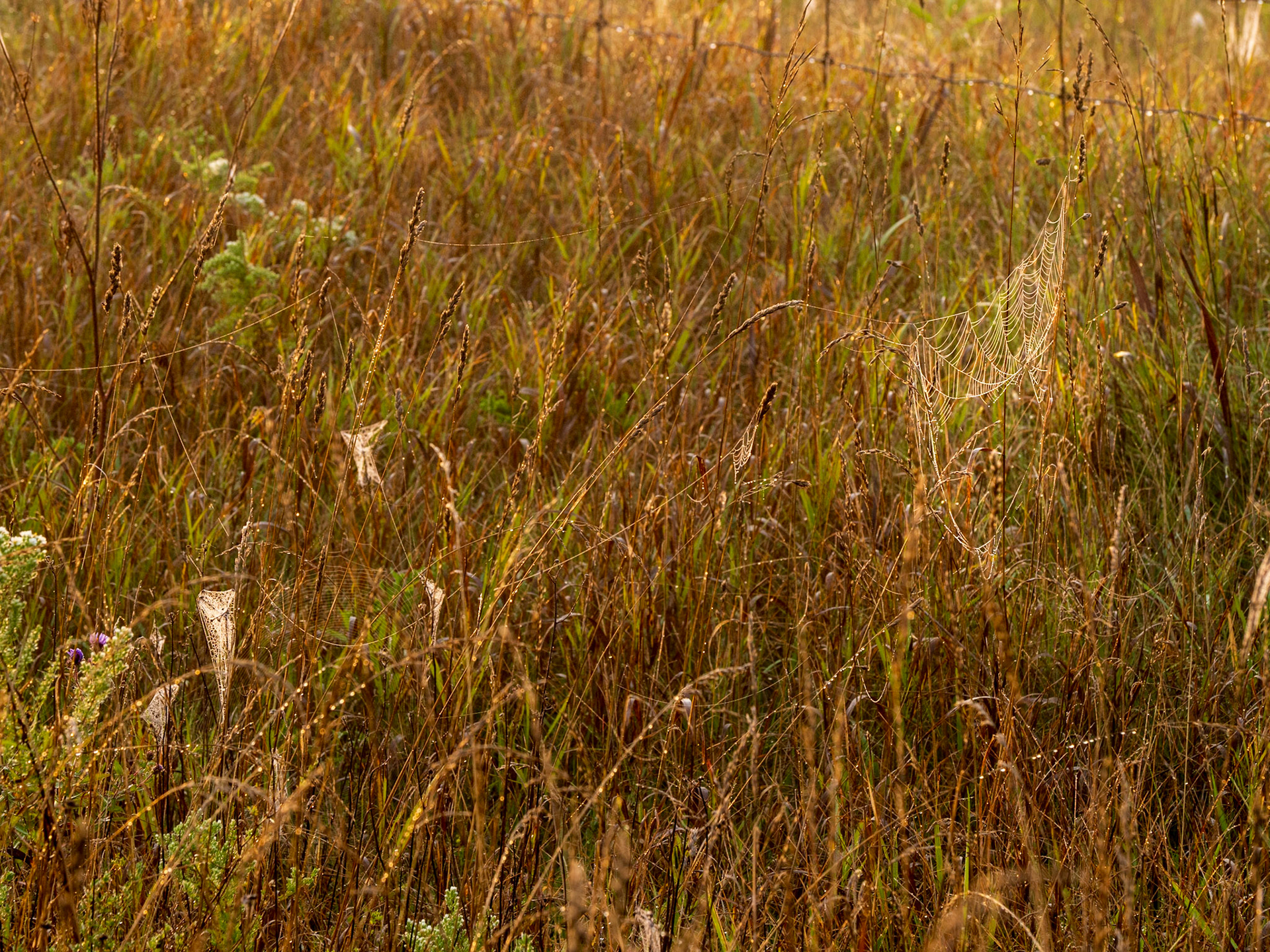

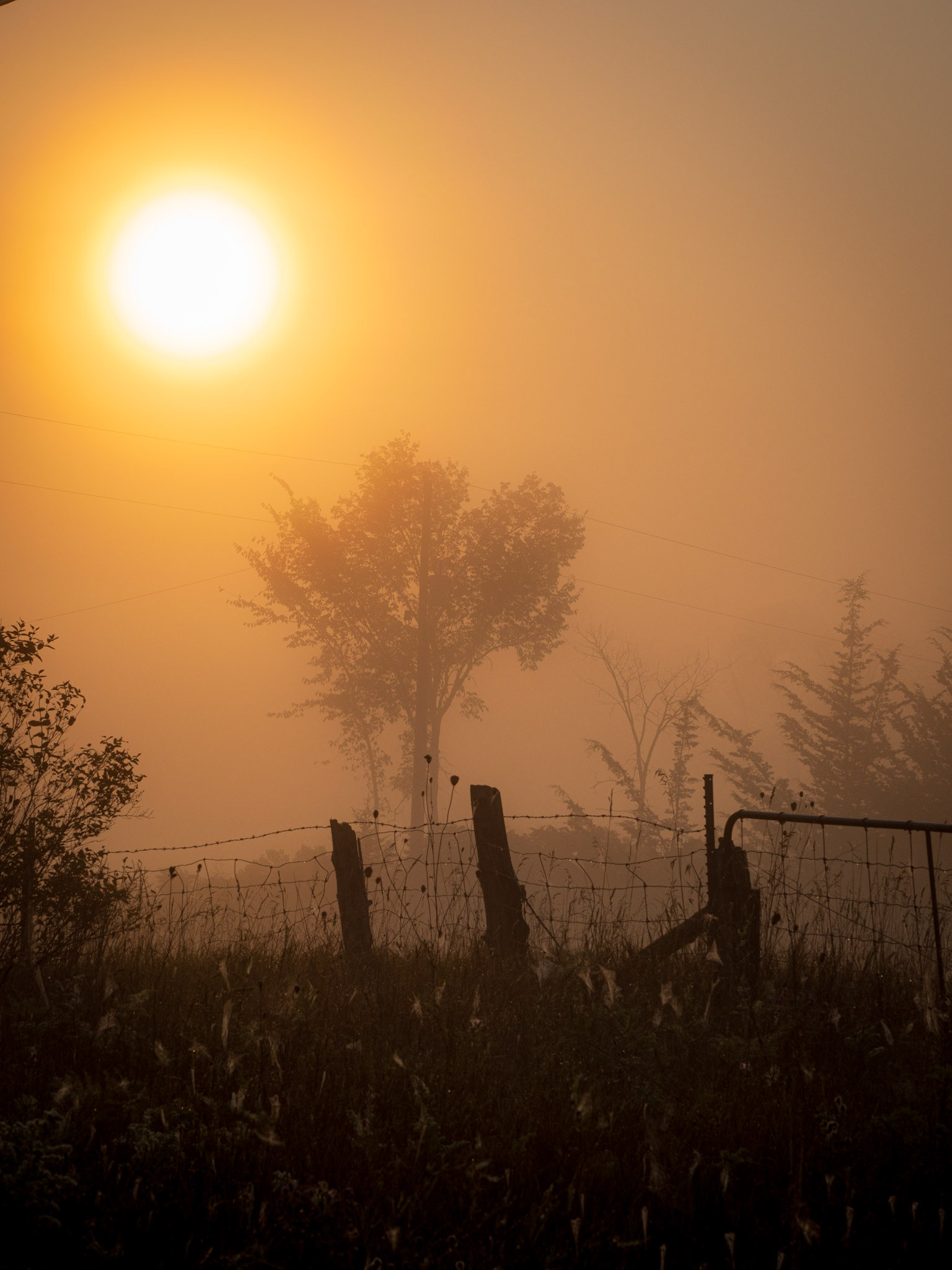
(Above) Changes in orientation can have a huge impact on an image. Shot from basically the same position using only slightly different focal lengths (40mm and 56mm, respectively), these images each tell a slightly different story. While both offer a sense of mystery, the landscape orientation feels more about the environment overall, with the bands of luminance (foreground, lighter midground, bright background) increase the sense of depth in an image made of of very flat, two-dimension planes. The portrait orientation, slightly magnified, makes the one tree, bracketed by fence posts, the centre of interest and overall feels warmer, because much of the yellow-grey from the landscape shot has been excluded.
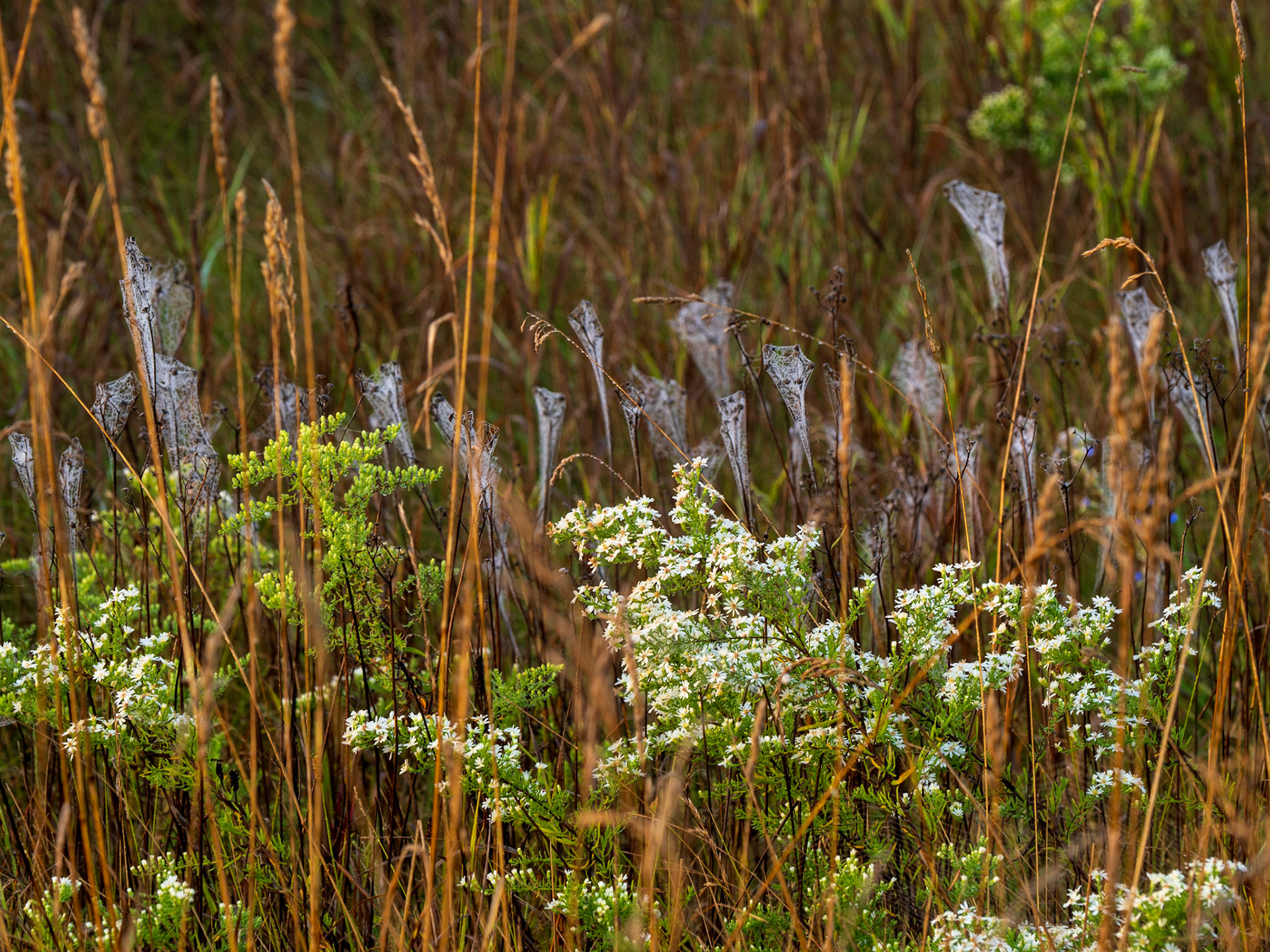
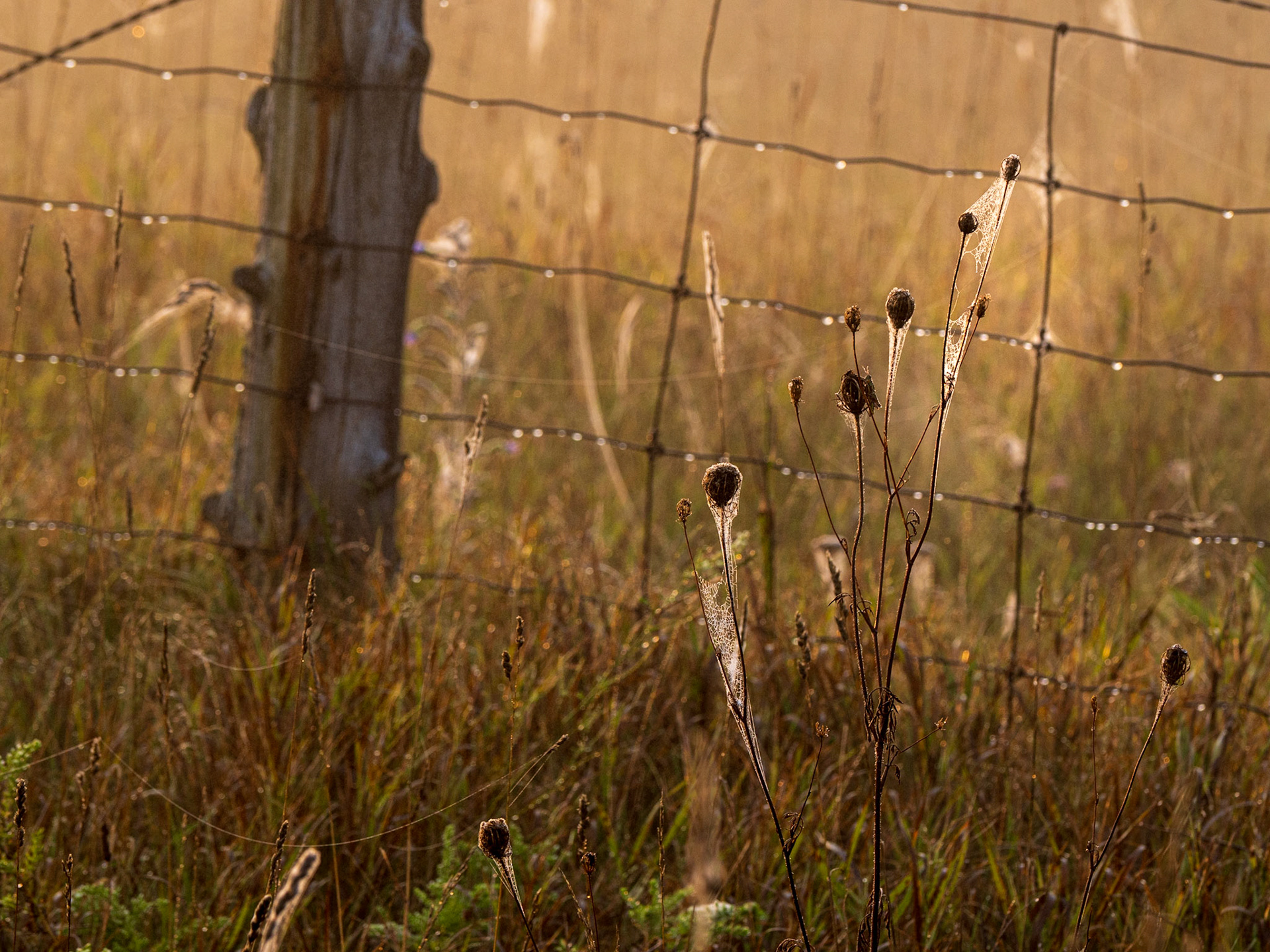
The combination of back/side lighting and heavy morning dew brought out a myriad of spiderwebs. Fascinating feats of natural engineering, they often go unnoticed, until you stumble and splutter though one at face level!
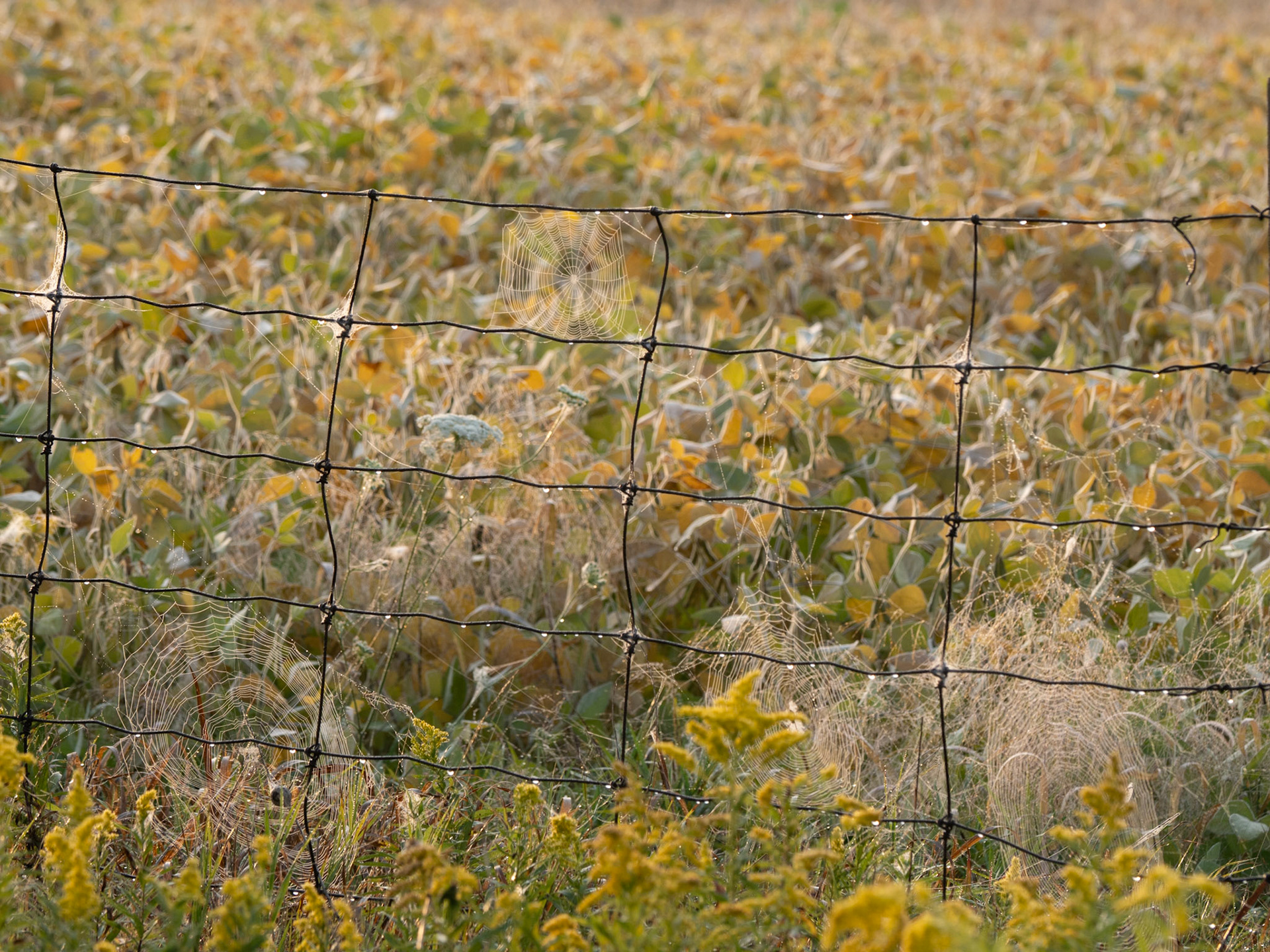
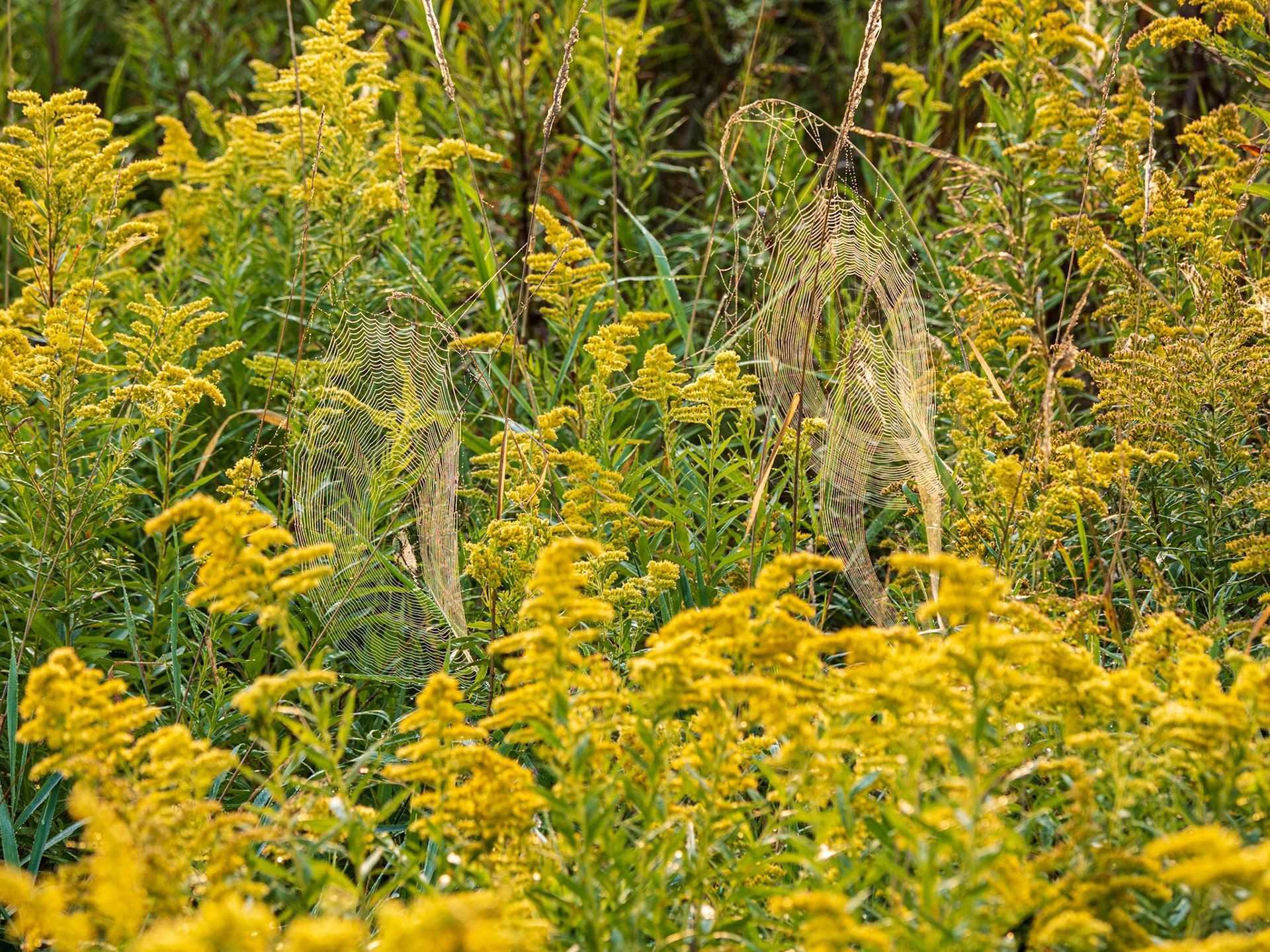
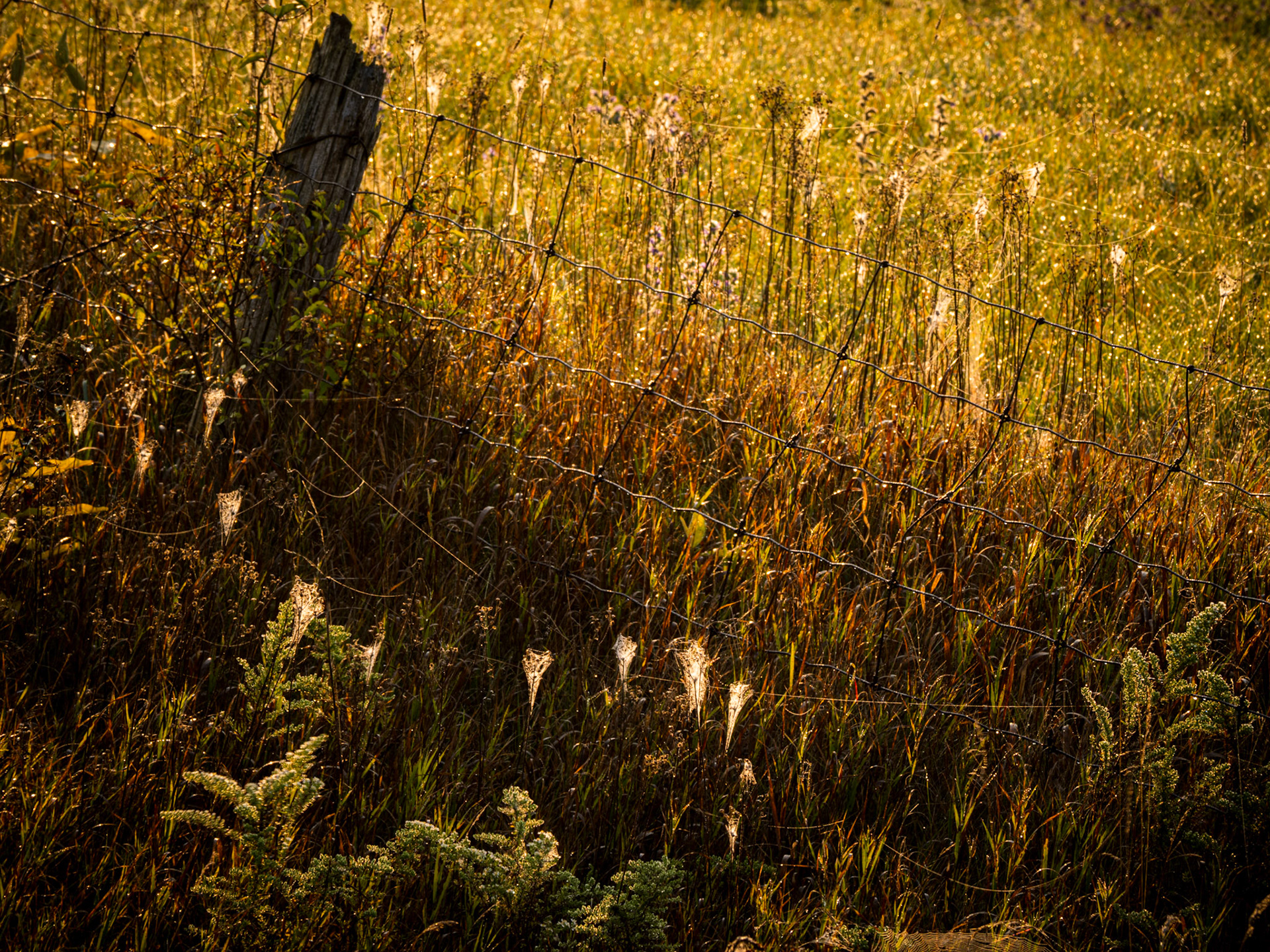
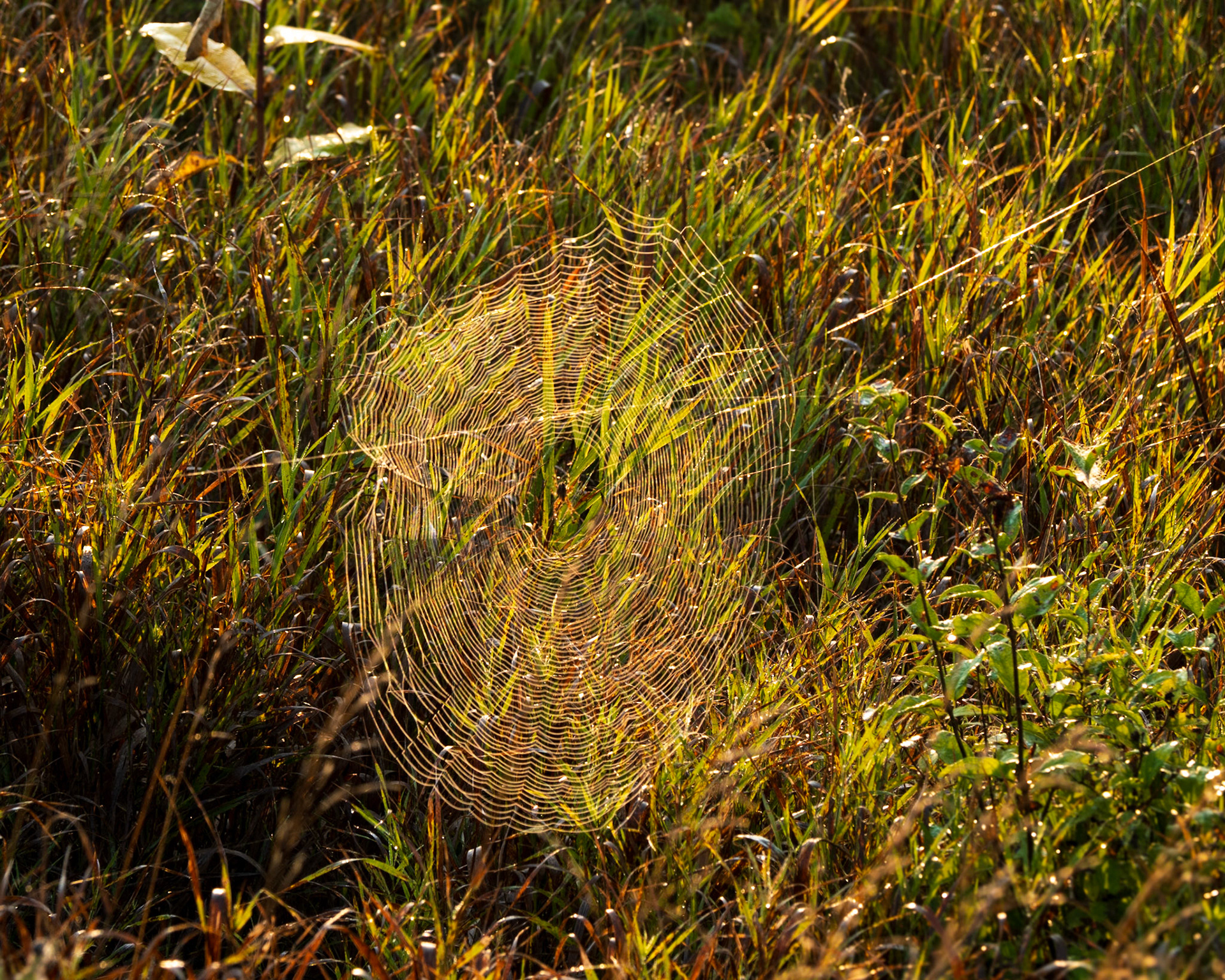

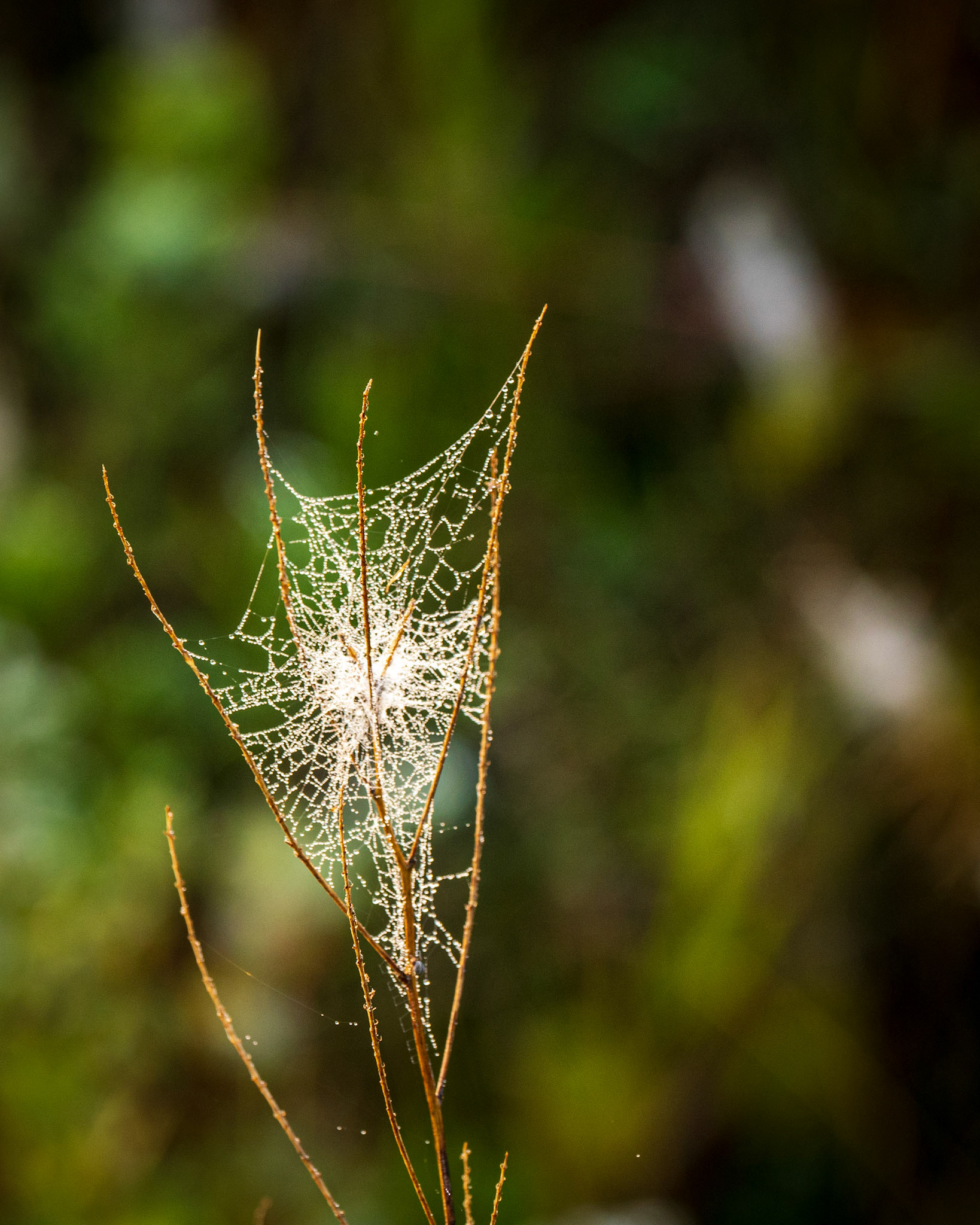
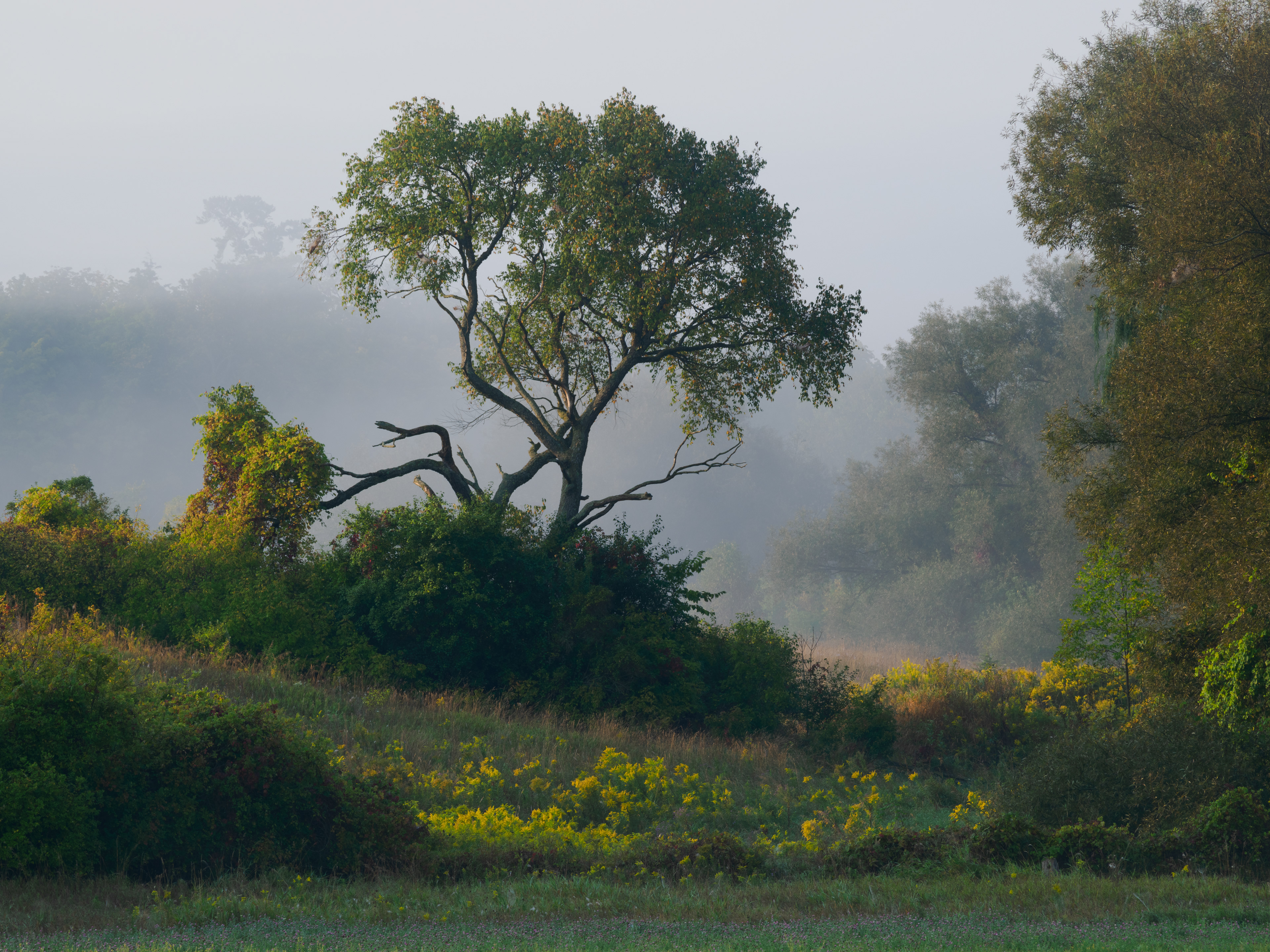

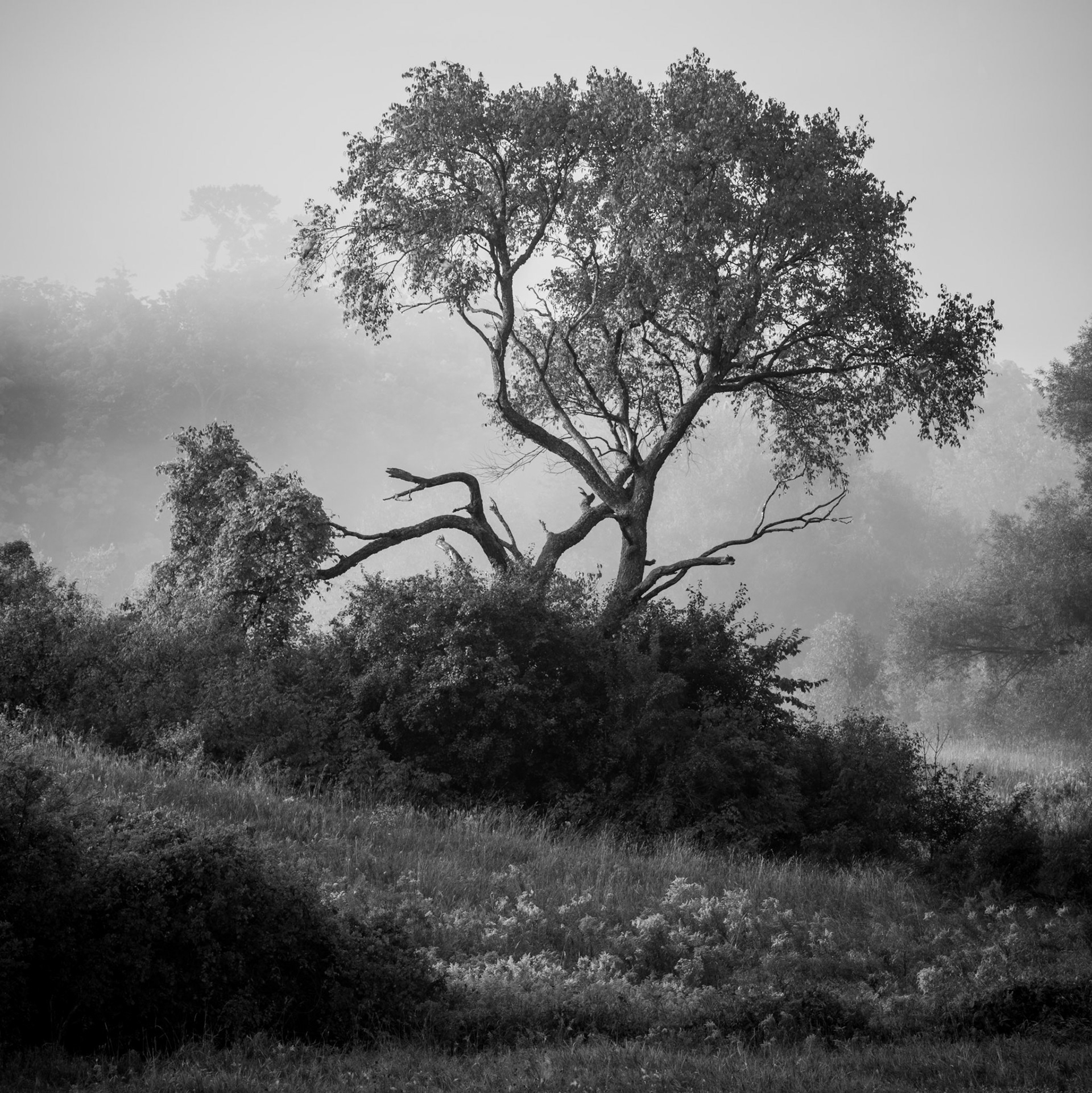
The large, gnarled tree seemed to pop out of the fog at me and I knew I had to make this photo. For comparison purposes, I have included the original, unprocessed capture on the left, the final color version in the middle and a black and white version on the right.
Moving from color to monochrome - especially in foggy or misty scenes can add a deeper sense of other worldliness. I originally drove past this scene. Then, when my brain caught up with my eyes. I stopped the car, turned round and located it once again. It reminded me of the work of Nigel Danson, an absolutely brilliant landscape photographer from the UK. Or rather, it reminded me of the beginning of one of his works. His post-processing is transformative and he truly exemplifies the importance of pre-visualization and of taking the time to carefully edit your work after capture.
As Ansel Adams said, "The negative is like the score (of a piece of music) and the print is the performance."
That negative (or raw file) can be interpreted in many ways...


